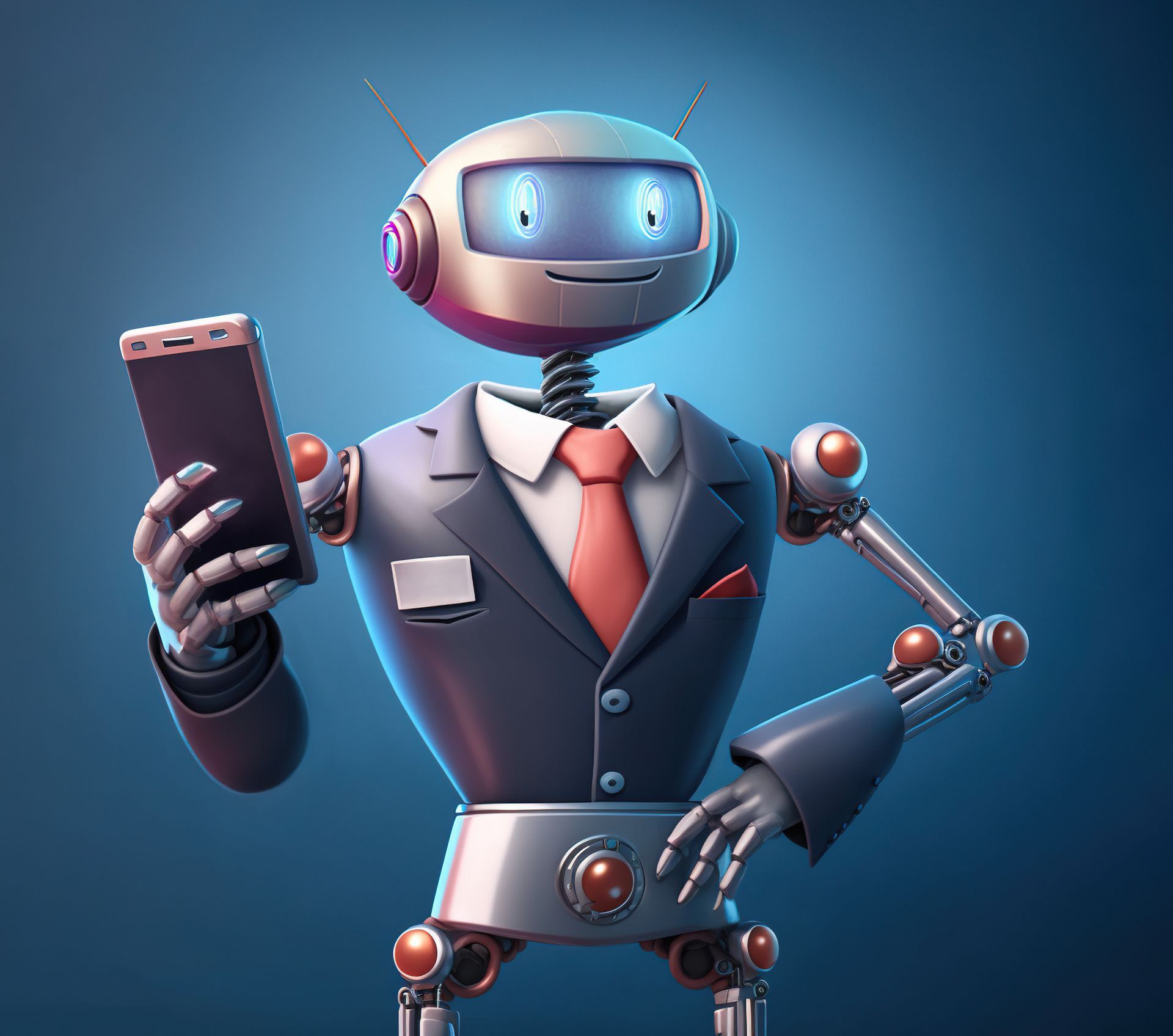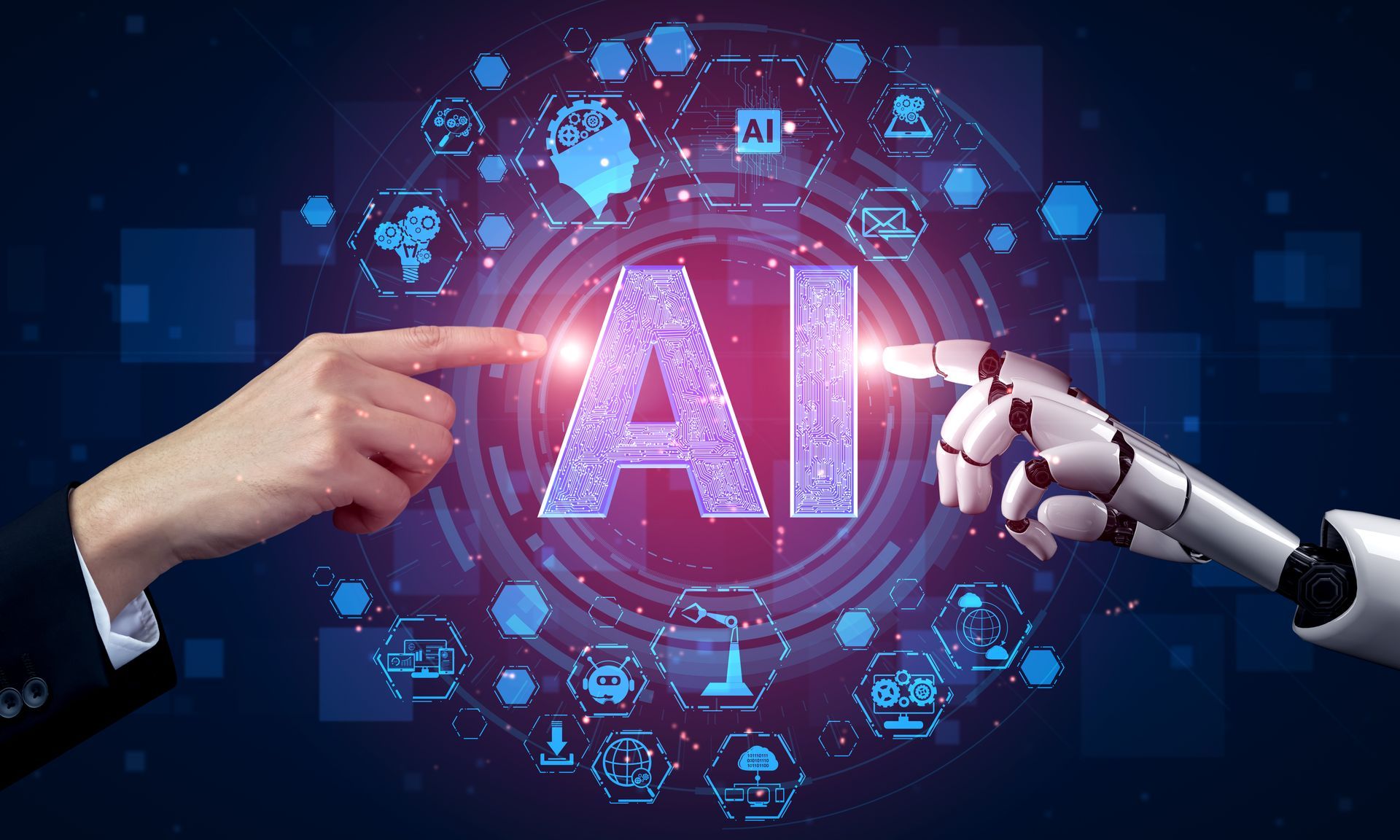Practical Guide: Building an AI Chatbot for Customer Support
Practical Guide: Building an AI Chatbot for Customer Support

Practical Guide: Building an AI Chatbot for Customer Support
I. Introduction
A. Importance of Customer Support
Providing exceptional customer support has always been a vital aspect of running a successful business. Customer satisfaction, loyalty, and positive word-of-mouth are directly influenced by the quality of support offered. In an increasingly competitive landscape, where customers have numerous choices at their fingertips, delivering outstanding support is more crucial than ever.
B. The Emergence of AI Chatbots
To address the growing demands and challenges of customer support, businesses are turning to AI chatbots as a revolutionary solution. AI chatbots, powered by artificial intelligence and natural language processing, have emerged as intelligent virtual assistants capable of simulating human-like conversations. They offer the potential to transform customer support operations, providing efficient and scalable solutions.
AI chatbots excel in handling routine customer inquiries, providing instant responses, and resolving common issues without human intervention. With their ability to operate 24/7, AI chatbots ensure round-the-clock support availability. Moreover, they can handle multiple conversations simultaneously, ensuring prompt assistance to customers even during peak times.
By leveraging AI chatbots, businesses can streamline their support processes, reduce response times, and improve overall customer satisfaction. Human agents, freed from repetitive tasks, can focus on more complex and value-added interactions, fostering meaningful connections with customers.
In this practical guide, we will explore the step-by-step process of building an AI chatbot for customer support. By embracing this cutting-edge technology, businesses can revolutionize their support operations, enhance customer experiences, and stay ahead in the dynamic marketplace. Let's dive in and unlock the potential of AI chatbots in customer support!
II. Understanding AI Chatbots for Customer Support
A. Definition and Benefits of AI Chatbots
AI chatbots, also known as virtual assistants or conversational agents, are computer programs designed to interact with humans in a conversational manner. These chatbots leverage artificial intelligence, natural language processing (NLP), and machine learning algorithms to understand user queries, provide responses, and perform tasks.
The benefits of AI chatbots in customer support are remarkable. Firstly, they offer instant and round-the-clock assistance, ensuring that customers can receive support at any time of the day or night. With AI chatbots, there are no more frustrating waits in long queues or delays in receiving responses. Customers can have their queries addressed promptly, enhancing satisfaction and loyalty.
Secondly, AI chatbots provide consistency in customer support experiences. Unlike human agents who may vary in their responses or knowledge levels, AI chatbots consistently deliver accurate information and follow predefined protocols. This ensures that customers receive the same quality of service regardless of the time or day they seek assistance.
Moreover, AI chatbots offer scalability for businesses. They can handle multiple customer interactions simultaneously without compromising response times or quality. This ability to manage high volumes of inquiries makes AI chatbots an ideal solution for businesses experiencing peaks in customer demand or those seeking to expand their customer base.
B. How AI Chatbots Enhance Customer Support Experiences
AI chatbots enhance customer support experiences in various ways. Firstly, they provide instant responses, eliminating wait times and reducing customer frustration. Customers can receive immediate assistance, increasing their satisfaction and perception of the brand's responsiveness.
Secondly, AI chatbots can handle routine inquiries and frequently asked questions efficiently. By automating repetitive tasks, chatbots free up human agents to focus on more complex and value-added interactions. This ensures that customers with complex issues receive the necessary attention and expertise from human agents while routine queries are handled seamlessly by AI chatbots.
AI chatbots also offer personalized experiences. By leveraging customer data and preferences, chatbots can deliver tailored recommendations, product suggestions, or troubleshooting steps. This level of personalization creates a more engaging and relevant interaction for customers, fostering a sense of individual attention.
Overall, AI chatbots enhance customer support experiences by providing prompt, consistent, and scalable assistance. They empower businesses to deliver efficient and personalized support, ultimately leading to increased customer satisfaction, loyalty, and brand advocacy. In the following sections, we will explore the practical steps to build an AI chatbot for customer support, enabling businesses to leverage these benefits and elevate their customer support capabilities.
III. Planning Your AI Chatbot Strategy
A. Defining the Purpose and Goals of Your Chatbot
Before diving into building an AI chatbot, it's crucial to define its purpose and goals. Ask yourself: What specific tasks or functions do you want your chatbot to perform? Do you aim to provide product information, handle customer inquiries, or assist with order tracking? Clarifying the purpose of your chatbot will guide its development and ensure it aligns with your overall customer support strategy.
Next, establish clear goals for your chatbot. Are you aiming to improve response times, reduce support costs, or enhance customer satisfaction? Defining these objectives will help you measure the success and effectiveness of your chatbot implementation.
B. Identifying Target Audience and Customer Needs
Understanding your target audience and their needs is vital for creating a chatbot that delivers value. Conduct market research, analyze customer feedback, and identify common pain points and frequently asked questions. This information will enable you to design the chatbot's conversational flows, provide relevant responses, and address customer needs effectively.
Consider the preferences and communication styles of your target audience. Are they more comfortable with formal language or casual conversations? Do they prefer quick, concise responses or more detailed explanations? Tailor your chatbot's tone and approach to match the preferences of your audience, ensuring a seamless and engaging interaction.
C. Choosing the Right Platform for Building Your Chatbot
Selecting the appropriate platform to build your chatbot is essential for its successful development and deployment. There are various options available, ranging from do-it-yourself platforms to custom development frameworks. Consider factors such as ease of use, scalability, integration capabilities, and support resources when choosing a platform.
If you prefer a no-code or low-code approach, consider chatbot builder platforms like Chatfuel, Dialogflow, or ManyChat. These platforms provide intuitive interfaces and pre-built templates that simplify the chatbot creation process. On the other hand, if you require more flexibility and customization, developing a custom chatbot using frameworks like Microsoft Bot Framework or IBM Watson Assistant might be the right choice.
Carefully evaluate the features, capabilities, and pricing models of different platforms to ensure they align with your requirements and budget.
By planning your AI chatbot strategy, defining its purpose and goals, understanding your target audience, and selecting the right platform, you lay a solid foundation for successful chatbot development. In the following sections, we will explore the practical steps to build your AI chatbot for customer support, bringing your strategy to life.
IV. Designing Conversational Flows and User Experience
A. Mapping Out Chatbot Interactions and User Journeys
To create a seamless user experience, it's essential to map out the conversational flows and user journeys of your AI chatbot. Start by identifying the primary user intents or goals and determine how the chatbot will guide users towards achieving those intents. This involves understanding the different paths users may take and planning the logical flow of conversations.
Consider the potential user questions, responses, and decision points that may arise during interactions with the chatbot. Anticipate various scenarios and design branching paths accordingly. Visualize the flow using flowcharts or diagrams to ensure clarity and coherence in the chatbot's responses.
B. Crafting Engaging and Natural Language Responses
One of the key factors in designing a successful AI chatbot is crafting responses that are engaging, natural, and human-like. Aim to create chatbot dialogues that are easy to understand, concise, and conversational in nature. Avoid overly formal or robotic language and strive for a tone that aligns with your brand personality and the preferences of your target audience.
Use a mix of pre-defined responses and dynamic content to provide relevant and contextual information. This may involve incorporating variables such as user names, order details, or personalized recommendations. By personalizing the responses, you can create a more tailored and delightful user experience.
Consider employing conversational design principles such as providing clear prompts, using positive reinforcement, and allowing users to easily navigate or repeat information. Additionally, be prepared to handle ambiguous or out-of-scope queries gracefully by setting appropriate fallback responses or offering escalation options to human support agents.
C. Incorporating Personalized and Context-Aware Features
To enhance the user experience further, consider incorporating personalized and context-aware features into your chatbot. Leverage user data and preferences, such as past interactions, purchase history, or location, to deliver customized responses and recommendations. This can create a more personalized and relevant experience, making users feel understood and valued.
Context awareness is also crucial in ensuring a smooth conversation flow. Design your chatbot to remember previous user inputs or questions to provide consistent and coherent responses. By maintaining context throughout the interaction, your chatbot can better understand user intent and respond appropriately, resulting in a more efficient and satisfactory experience.
Take advantage of AI technologies like natural language understanding (NLU) and sentiment analysis to improve the chatbot's ability to comprehend user queries and emotions accurately. These features enable your chatbot to provide more accurate and contextually appropriate responses, fostering a more empathetic and human-like interaction.
By designing conversational flows, crafting engaging responses, and incorporating personalized and context-aware features, you can create an AI chatbot with a user experience that feels natural, intuitive, and highly satisfying. In the next section, we will delve into the practical steps of implementing AI capabilities in your chatbot, unlocking its true potential.
V. Implementing AI Capabilities in Your Chatbot
A. Choosing the Right AI Technologies for Your Chatbot
To create a powerful and effective AI chatbot, it is essential to choose the right AI technologies that align with your chatbot's objectives and requirements. Consider the following:
Natural Language Processing (NLP): NLP allows your chatbot to understand and interpret human language. Choose an NLP framework or API, such as Google Cloud Natural Language Processing or IBM Watson Natural Language Understanding, that provides robust language understanding capabilities.
Speech Recognition and Synthesis: If your chatbot involves voice interactions, integrating speech recognition and synthesis technologies can enhance the user experience. Popular options include Google Cloud Speech-to-Text and Amazon Polly.
Sentiment Analysis: Sentiment analysis helps your chatbot understand and respond appropriately to user emotions. Implement sentiment analysis models or APIs, such as the TextBlob library or the Azure Text Analytics API, to capture and analyze user sentiment.
Intent Recognition: Intent recognition enables your chatbot to accurately identify the intent behind user queries. Leverage intent recognition frameworks like Dialogflow, Rasa, or Microsoft LUIS (Language Understanding Intelligent Service) to train your chatbot to recognize user intents effectively.
B. Integrating Natural Language Processing (NLP) and Machine Learning
Integrating NLP and machine learning capabilities into your chatbot is vital for enhancing its conversational abilities and improving its performance over time. NLP enables your chatbot to understand user inputs, extract relevant information, and determine the intent behind queries. Machine learning empowers your chatbot to learn from user interactions and improve its responses based on patterns and feedback.
Integrate NLP frameworks and machine learning algorithms into your chatbot development process. Leverage pre-trained models such as BERT (Bidirectional Encoder Representations from Transformers) or GPT (Generative Pre-trained Transformer) to enhance language understanding and generate contextually appropriate responses.
C. Training and Refining Your Chatbot's AI Algorithms
To ensure your chatbot delivers accurate and relevant responses, training and refining its AI algorithms is crucial. Train your chatbot on relevant datasets, including labeled data specific to your domain, to enhance its understanding and improve response accuracy.
Utilize techniques like transfer learning to leverage pre-existing language models trained on vast amounts of data. Fine-tune these models with your specific dataset to optimize performance and align the chatbot's responses with your desired outcomes.
Continuously evaluate your chatbot's performance and gather user feedback to identify areas for improvement. Refine your chatbot's AI algorithms based on these insights, adjusting its language understanding, response generation, and context awareness to provide an enhanced user experience.
By choosing the right AI technologies, integrating NLP and machine learning, and training and refining your chatbot's AI algorithms, you equip it with the intelligence and adaptability needed to understand user queries and deliver valuable responses. In the next section, we will delve into the practical steps of developing and deploying your chatbot, bringing your AI chatbot to life.
VI. Developing and Deploying Your Chatbot
A. Selecting a Development Framework or Chatbot Builder
To bring your AI chatbot to life, you need to select a development framework or chatbot builder that suits your requirements. Consider factors such as ease of use, flexibility, scalability, and integration capabilities when making this choice.
If you have coding expertise and require maximum customization, you can opt for frameworks like Microsoft Bot Framework, TensorFlow, or Rasa. These frameworks offer extensive control and flexibility over the development process, allowing you to fine-tune your chatbot's logic and features.
Alternatively, if you prefer a no-code or low-code approach, chatbot builders like Chatfuel, Dialogflow, or ManyChat can be excellent options. These platforms provide intuitive interfaces, pre-built templates, and simplified workflows that streamline the development process, even for users without extensive programming knowledge.
B. Designing and Coding Chatbot Logic and Features
Once you have selected your development framework or chatbot builder, it's time to design and code the logic and features of your chatbot. Begin by mapping out the conversational flow, considering various user inputs and possible chatbot responses. Define the decision points and logic necessary to guide users towards their desired outcomes.
Implement the designed conversational flows by writing code or using visual interfaces provided by the chosen platform. Configure the chatbot's responses, integrate AI capabilities like NLP and machine learning, and incorporate relevant APIs for accessing external data or services.
As you code the chatbot, keep in mind the importance of error handling and graceful fallbacks. Account for unexpected user inputs and design appropriate responses to handle those situations. Consider implementing conversational features like buttons, quick replies, or image and video attachments to enhance the chatbot's interactivity.
C. Testing and Refining the Chatbot before Deployment
Before deploying your chatbot to real-world users, thorough testing is essential to ensure its performance and reliability. Test the chatbot using various scenarios and user inputs to identify any bugs, errors, or unexpected behaviors.
Simulate real user interactions and evaluate the chatbot's responses for accuracy, clarity, and relevance. Consider both expected and edge cases to ensure the chatbot can handle a wide range of user inputs effectively.
Gather feedback from testers or pilot users to understand their experience and identify areas for improvement. Use this feedback to refine the chatbot's logic, responses, and user experience. Make necessary adjustments to enhance the chatbot's overall performance and usability.
Repeat the testing and refinement process iteratively until you are satisfied with the chatbot's capabilities and user experience. Regularly update and maintain the chatbot to address evolving user needs and incorporate new features or improvements.
By selecting the right development framework or chatbot builder, designing and coding the chatbot's logic and features, and thoroughly testing and refining it before deployment, you ensure the successful development and readiness of your AI chatbot. In the next section, we will explore the best practices for integrating and maintaining your chatbot within your customer support ecosystem.
VII. Ensuring Seamless Integration and Maintenance
A. Integrating the Chatbot with Existing Customer Support Systems
To maximize the efficiency and effectiveness of your AI chatbot, seamless integration with existing customer support systems is crucial. Integrate your chatbot with your customer relationship management (CRM) system, ticketing system, or knowledge base to access relevant customer data, track interactions, and provide personalized assistance.
Ensure that the chatbot can seamlessly hand off conversations to human agents when necessary. Establish a smooth transition between the chatbot and human support to maintain a seamless customer experience. This integration allows your chatbot to work in tandem with your existing support infrastructure, providing a cohesive and comprehensive customer support solution.
B. Monitoring and Analyzing Chatbot Performance and User Feedback
Monitoring and analyzing the performance of your chatbot is essential to identify areas for improvement and optimize its capabilities. Track metrics such as response accuracy, completion rates, and user satisfaction to gauge the chatbot's performance.
Leverage analytics tools and dashboards to gain insights into user interactions, frequently asked questions, and the effectiveness of the chatbot's responses. Analyze user feedback, both qualitative and quantitative, to understand customer sentiment, identify pain points, and identify opportunities for enhancement.
Regularly review chatbot logs, error reports, and user transcripts to identify any issues or patterns that require attention. Use this data to refine the chatbot's conversational flows, improve its understanding of user intent, and enhance its overall performance.
C. Regularly Updating and Improving the Chatbot's Functionality
Maintaining and enhancing your chatbot's functionality is crucial to its long-term success. Regularly update the chatbot's knowledge base, responses, and underlying AI models to keep up with evolving customer needs, market trends, and product or service updates.
Leverage user feedback and data analysis to identify areas where the chatbot can be improved. Consider adding new features, expanding its capabilities, or refining its language understanding to deliver a more sophisticated and accurate user experience.
Stay up to date with advancements in AI technologies and explore opportunities to incorporate new capabilities into your chatbot. Explore emerging technologies such as voice recognition, sentiment analysis, or context-awareness to enhance the chatbot's capabilities further.
Regular maintenance, updates, and improvements ensure that your chatbot remains relevant, effective, and aligned with your customer support goals. Continuously evaluate and iterate on your chatbot to provide a consistently high-quality and valuable experience for your customers.
By integrating your chatbot with existing customer support systems, monitoring and analyzing its performance, and regularly updating and improving its functionality, you can ensure a seamless and optimized chatbot experience for both your customers and support team. In the final section, we will summarize the key points and offer closing remarks on building an AI chatbot for customer support.
VIII. Best Practices for AI Chatbot Success
A. Training Chatbot Operators and Support Staff
To maximize the effectiveness of your AI chatbot, it is important to train chatbot operators and support staff on how to utilize and interact with the chatbot effectively. Provide comprehensive training sessions to familiarize them with the chatbot's capabilities, functionalities, and limitations.
Train operators on how to handle escalations from the chatbot to ensure a smooth transition from automated interactions to human support when necessary. Equip them with the knowledge and resources to assist customers who require more complex or personalized assistance.
Continuously update and educate chatbot operators and support staff on any changes or improvements made to the chatbot's functionalities. Encourage open communication and feedback to foster collaboration between chatbots and human agents, enabling them to work together seamlessly.
B. Ensuring Transparency and Providing Fallback Options
Transparency is key in maintaining customer trust and confidence in your AI chatbot. Clearly communicate to customers when they are interacting with a chatbot and provide information about its capabilities. Set appropriate expectations regarding the chatbot's abilities and limitations, ensuring that customers understand the level of assistance they can expect.
In cases where the chatbot is unable to fulfill a user's request or provide a satisfactory response, it is important to provide fallback options. These options can include providing access to human support agents, offering alternative channels for assistance, or directing users to relevant self-service resources.
C. Balancing Automation with Human Intervention When Needed
While AI chatbots offer automation and efficiency, it is important to strike a balance between automation and human intervention when handling customer inquiries. Identify scenarios where human touch is crucial, such as handling sensitive issues, complex queries, or instances that require empathy and emotional support.
Implement seamless handoff mechanisms that allow customers to easily transition from the chatbot to a human agent when necessary. This ensures a personalized and empathetic customer experience while optimizing the benefits of automation provided by the chatbot.
Regularly evaluate the performance and effectiveness of your chatbot's automated responses. Use customer feedback and data analysis to identify areas where human intervention may be required and refine the chatbot's logic accordingly.
By training chatbot operators and support staff, ensuring transparency, and striking the right balance between automation and human intervention, you can maximize the success of your AI chatbot in delivering exceptional customer support. In the final section, we will conclude our practical guide to building an AI chatbot for customer support and highlight its significance in today's digital landscape.
Conclusion
In this practical guide, we explored the process of building an AI chatbot for customer support. We began by recognizing the importance of customer support in the digital age and the rise of AI chatbots as a solution for efficient and scalable support. Throughout the guide, we covered various essential steps and considerations for a successful implementation.
We emphasized the significance of planning your chatbot strategy, identifying suitable use cases, and gathering high-quality data to fuel its intelligence. Choosing the right AI technologies, integrating natural language processing (NLP) and machine learning, and training and refining your chatbot's AI algorithms were highlighted as crucial factors in enhancing its capabilities.
Furthermore, we discussed the importance of designing conversational flows, focusing on user experience, and incorporating personalized and context-aware features to create engaging interactions. Selecting a suitable development framework or chatbot builder, coding the chatbot logic, and thoroughly testing and refining it before deployment were emphasized as crucial steps in the development process.
We recognized the importance of seamless integration with existing customer support systems, monitoring and analyzing chatbot performance, and providing regular updates and improvements to maintain its effectiveness. Best practices such as training chatbot operators, ensuring transparency, and balancing automation with human intervention were highlighted as key factors for AI chatbot success.
We explored real-world case studies that demonstrated the benefits and outcomes achieved through successful AI chatbot implementations in customer support. These examples showcased how AI chatbots can enhance response times, improve customer satisfaction, and increase operational efficiency.
In conclusion, building an AI chatbot for customer support requires careful planning, thoughtful design, and strategic implementation. By following the practical steps outlined in this guide, businesses can create intelligent chatbot solutions that deliver exceptional customer experiences while reducing support costs and increasing efficiency.
We encourage businesses to embrace AI chatbot technology as a valuable asset for their customer support ecosystem. The integration of AI chatbots can empower organizations to provide prompt, personalized, and available support to their customers, resulting in improved satisfaction, loyalty, and overall business success.
Embrace the power of AI chatbots and unlock a new level of customer support excellence in your organization. Start building your AI chatbot today and embark on a journey towards enhanced customer experiences and business growth.










